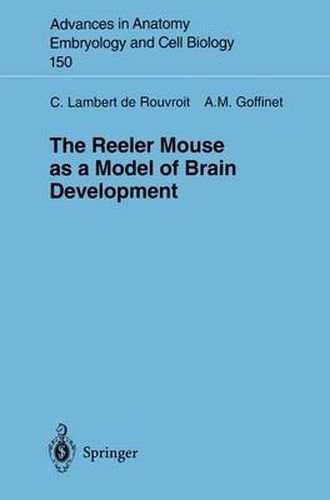Readings Newsletter
Become a Readings Member to make your shopping experience even easier.
Sign in or sign up for free!
You’re not far away from qualifying for FREE standard shipping within Australia
You’ve qualified for FREE standard shipping within Australia
The cart is loading…






This title is printed to order. This book may have been self-published. If so, we cannot guarantee the quality of the content. In the main most books will have gone through the editing process however some may not. We therefore suggest that you be aware of this before ordering this book. If in doubt check either the author or publisher’s details as we are unable to accept any returns unless they are faulty. Please contact us if you have any questions.
Only five years ago, nobody in his right mind would have consid ered publishing a book on reeler as a model for brain develop ment. Although this interesting mutation has been with us for half a century, it is fair to say that, in spite of a wave of enthusiasm in the late sixties and early seventies, generated primarily by Sidman, Caviness and colleagues, studies of reeler mice fell pro gressively out of fashion during the next two decades. All that changed almost overnight when the cloning of the reeler gene, dubbed reelin, was reported in Tom Curran’s laboratory in 1995. The fact that the same gene was identified at the same time independently by two other groups using positional cloning sug gested strongly that reelin was the right candidate. Although the key experiments of transgenic rescue have not been made (and perhaps will never be), the equation reeler is reelin has been established beyond reasonable doubt, as alterations of the reelin gene and/or its expression have been found in at least five alleles of reeler and in the mutation Shaking Rat Kawasaki (SRK), an ortholog of reeler.
$9.00 standard shipping within Australia
FREE standard shipping within Australia for orders over $100.00
Express & International shipping calculated at checkout
This title is printed to order. This book may have been self-published. If so, we cannot guarantee the quality of the content. In the main most books will have gone through the editing process however some may not. We therefore suggest that you be aware of this before ordering this book. If in doubt check either the author or publisher’s details as we are unable to accept any returns unless they are faulty. Please contact us if you have any questions.
Only five years ago, nobody in his right mind would have consid ered publishing a book on reeler as a model for brain develop ment. Although this interesting mutation has been with us for half a century, it is fair to say that, in spite of a wave of enthusiasm in the late sixties and early seventies, generated primarily by Sidman, Caviness and colleagues, studies of reeler mice fell pro gressively out of fashion during the next two decades. All that changed almost overnight when the cloning of the reeler gene, dubbed reelin, was reported in Tom Curran’s laboratory in 1995. The fact that the same gene was identified at the same time independently by two other groups using positional cloning sug gested strongly that reelin was the right candidate. Although the key experiments of transgenic rescue have not been made (and perhaps will never be), the equation reeler is reelin has been established beyond reasonable doubt, as alterations of the reelin gene and/or its expression have been found in at least five alleles of reeler and in the mutation Shaking Rat Kawasaki (SRK), an ortholog of reeler.